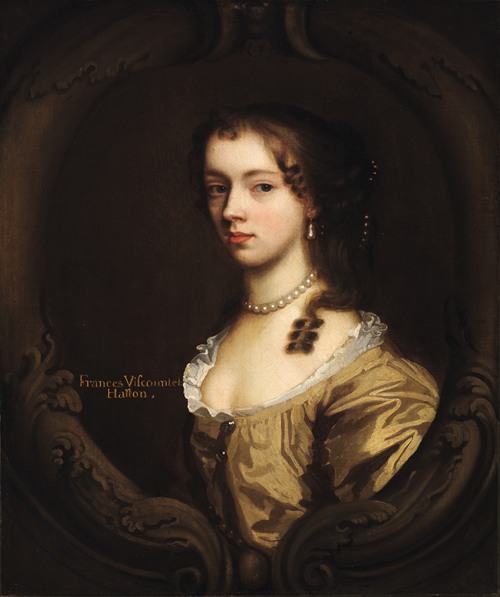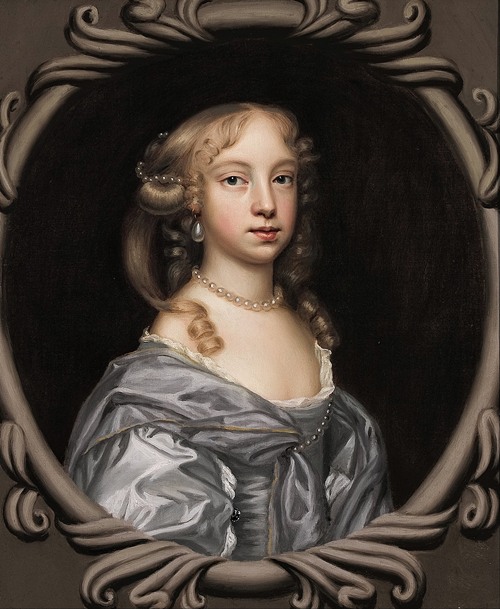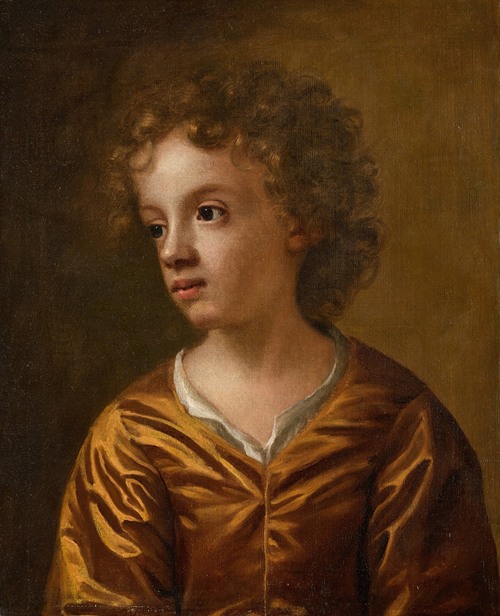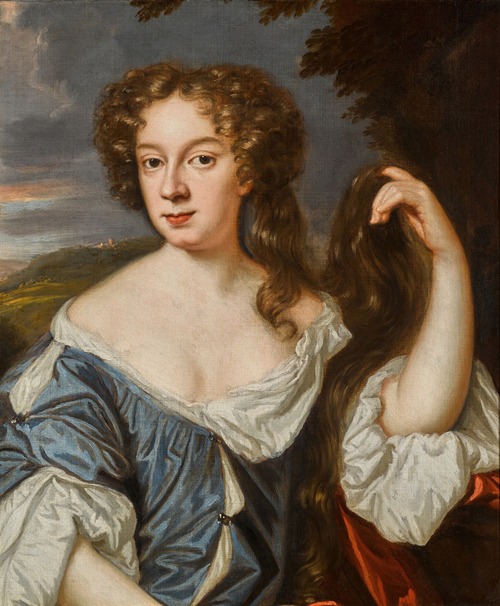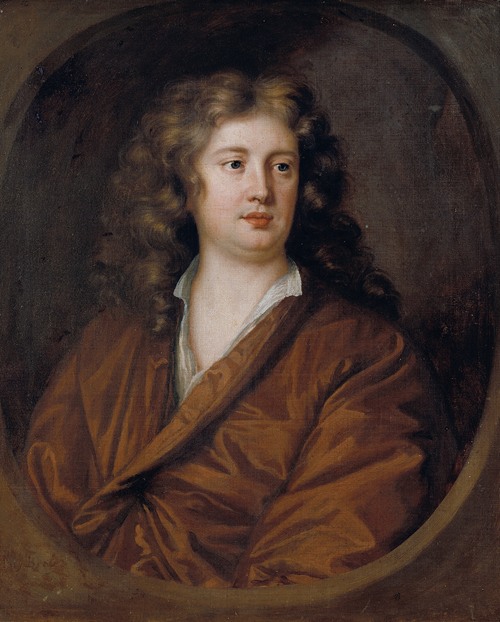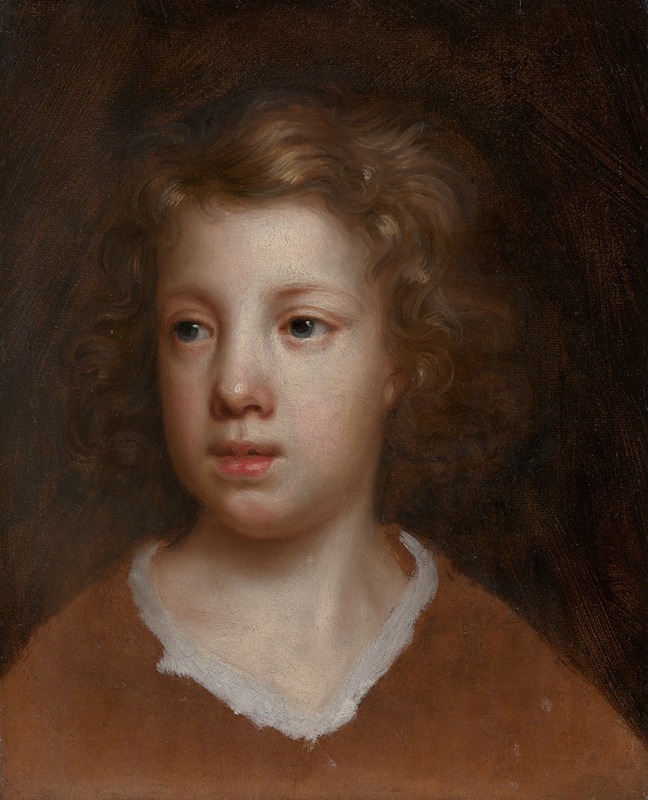

Mary Beale was an English portrait painter. Along with Joan Carlile (c. 1606 – 1679) and Susan Penelope Rosse (c. 1655 – 1700), she was part of a small band of female professional artists working in London. Beale became the main financial provider for her family through her professional work – a career she maintained from 1670/71 to the 1690s. Beale was also a writer, whose prose Discourse on Friendship of 1666 presents scholarly, uniquely female take on the subject. Her 1663 manuscript Observations on the materials and techniques employed "in her painting of Apricots", though not printed, is the earliest known instructional text in English written by a female painter. Praised first as a "virtuous" practitioner in "Oyl Colours" by Sir William Sanderson in his 1658 book Graphice: Or The use of the Pen and Pensil; In the most Excellent Art of PAINTING, Beale's work was later commended by court painter Sir Peter Lely and, soon after her death, by the author of "An Essay towards an English-School", his account of the most noteworthy artists of her generation.
Mary Beale was born in the rectory of Barrow, Suffolk, in late March 1633. She was baptised on 26 March by her father John Cradock in All Saints Church in the village. Her mother was Dorothy; her maiden name is illegible on her marriage record to John Cradock. Aside from being a rector, John Cradock was also an amateur painter, who may have taught Mary how to paint. It was common for fathers to teach their daughters how to paint at the time. Growing up in Barrow, Mary lived close to Bury St Edmunds. A group of painters worked in Bury St Edmunds, including Peter Lely and Matthew Snelling, whom Mary may have met in her youth. On 23 August 1643, Dorothy Cradock gave birth to a son named John. Dorothy died not long after the birth. During the Civil War, John Cradock appointed Walter Cradock, a distant cousin of his, as guardian of his children John and Mary.
Mary Cradock met Charles Beale (1632-1705), a cloth merchant who was also an amateur painter, during a visit to the Heighams of Wickhambrook, who were related to the Yelverton and Beale families. Charles Beale wrote her a passionate love letter and poem on 25 July of an unknown year. Mary Cradock married Charles Beale on 8 March 1652 at the age of eighteen. Her father, John Cradock, was gravely ill at the time and died a few days after Mary's marriage. The couple moved to Walton-on-Thames at some point afterward. Charles Beale was a Civil Service Clerk at the time, but eventually became Mary's studio manager once she became a professional painter. At some point, Charles was working for the Board of Green Cloth where he mixed colour pigments. Circa 1660–64 the family moved to Albrook, (now Allbrook), Otterbourne, Hampshire, to escape the plague. Throughout their marriage, Mary and Charles worked together as equals and as business partners, which was not often seen at the time. On 18 October 1654 Charles and Mary's first son, Bartholomew, was buried. Little else is known about their first son. Their second son was baptised on 14 February 1655/6 and also named Bartholomew. Their third son Charles was born in 1660.
The most common way to learn how to paint at the time was to copy great works and masterpieces that were accessible. Mary Beale preferred to paint in oil and water colours. Whenever she did a drawing, she would draw in crayon. Peter Lely, who succeeded Anthony van Dyck as the court painter, took a great interest in Mary's progress as an artist, especially since she would practice painting by imitating some of his work. Mary Beale started working by painting favours for people she knew in exchange for small gifts or favors. Charles Beale kept close record of everything Mary did as an artist. He would take notes on how she painted, what business transactions took place, who came to visit, and what praise she would receive. Charles wrote thirty notebooks' worth of observations over the years, calling Mary "my dearest heart". She became a semi-professional portrait painter in the 1650s and 1660s, working from her home, first in Covent Garden and later in Fleet Street in London. When living in Convent Garden, Beale was a near neighbor to artist Joan Carlile.
Mary received no formal training from an academy, had no connection to an artist guild, and no royal or courtly patronage. She received a humanist education from her father, who is most likely the one who taught Mary how to draw and paint. During her childhood in Suffolk Mary's father was friendly with contemporary British artists such as Sir Nathaniel Bacon, Robert Walker, and Sir Peter Lely, leading to both Robert Walker and Peter Lely being "the most likely drawing masters to the young Mary". The exact time of Mary's introduction to Lely is debated and one theory has the two meeting prior to her marriage to Charles, when she was living in Suffolk. The other theory has the pair meeting in either 1655 or 1656 when Mary and Charles moved to Convent Garden in London and became Lely's neighbour.
In detailed documents kept by Charles Beale of his wife's practice it states that Lely would visit the Beale home occasionally to observe Mary paint and praise her work. Their friendship led to Lely loaning Beale and her family some of his old master paintings for them to copy from. The Beale's commissioned many portraits from Lely of themselves and their friends. It is noted by contemporary George Vertue that portraits of Mary and her family were present at their home at Hind Court in 1661.
In 1663 Mary Beale wrote Observations, an instruction on painting apricots using oils. The work marks one of the earliest writings on oil painting instruction to come out of England by an artist of either gender. It was never released on its own in print, however scholars believe that manuscripts of the work were distributed. The work was found in a notebook collecting writings by Charles Beale but was written entirely by Mary, which Helen Draper states is "a unique example of husband-and-wife collaboration in the history of technical literature on painting."
Mary Beale also wrote a manuscript called Discourse on Friendship in 1666 and four poems in 1667.
